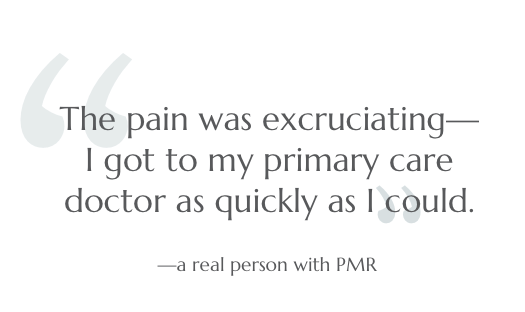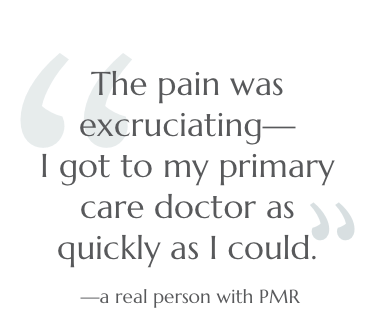What Is PMR?
How common is PMR?
Polymyalgia rheumatica, or PMR, is an inflammatory rheumatic disease. It's the second most common rheumatic disease after rheumatoid arthritis (RA).

PMR incidence
~1 out of every 2,000 people aged 50 years and older are diagnosed with PMR.
PMR and gender
Women are affected 2-3 times more than men.
PMR and age
People aged 50 years or older have a greater risk of developing PMR.
What are the symptoms of PMR?
Pain and stiffness in the hips and shoulders on both sides of the body are the most common symptoms of PMR.
Other symptoms of PMR may include:
![]()

PMR pain can change from day to day. Some days you might feel fine. Other days you might feel surprised at what you can’t do with your body. You may have first felt PMR pain out of nowhere one day, or it could have grown over time.
Living with PMR can be difficult
There are many symptoms that can make daily living hard.
PMR pain may disrupt your sleep. This can make you feel tired during the day. For many people, PMR pain and stiffness can feel worse in the morning.
PMR may make it feel impossible to do the tasks that you once found easy, such as:
PMR may also impact your mood
Nearly 1 out of 3 people with PMR have reported having depression.
It’s important to talk to your doctor about how you’re feeling. You are not alone, and your doctor can provide resources and support to help you.
What is the connection between PMR and inflammation?
![]()
PMR symptoms may go away with the help of steroids, other medications, or even on their own. If they come back, this is known as a flare.
